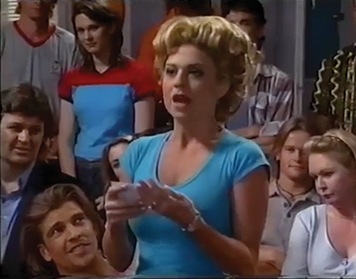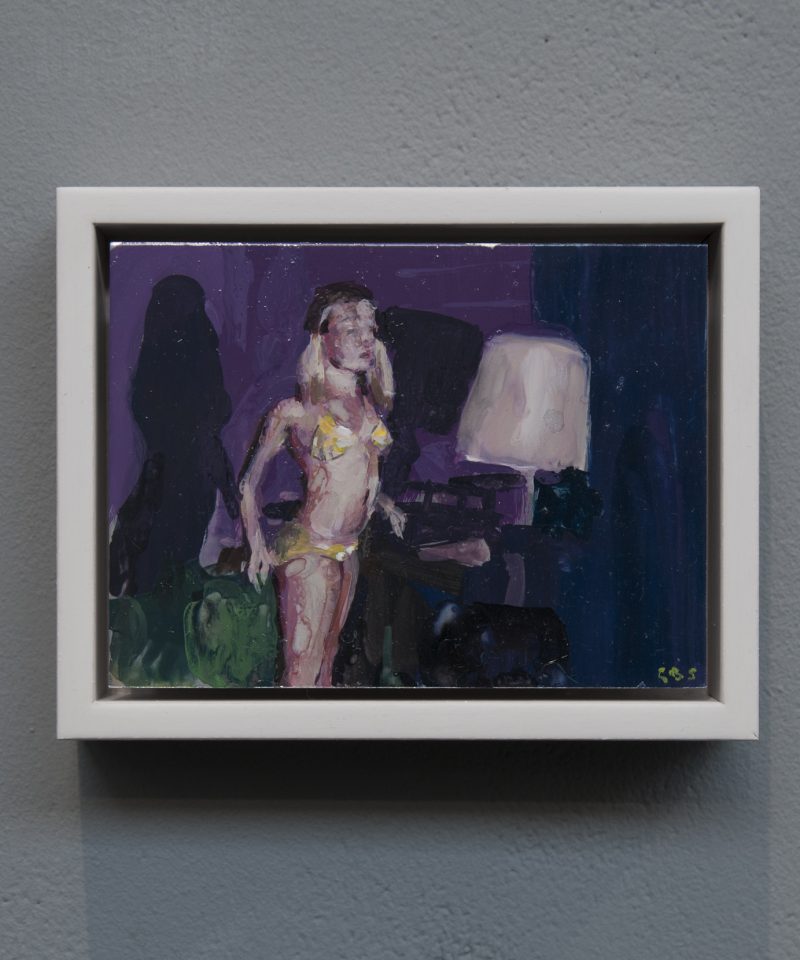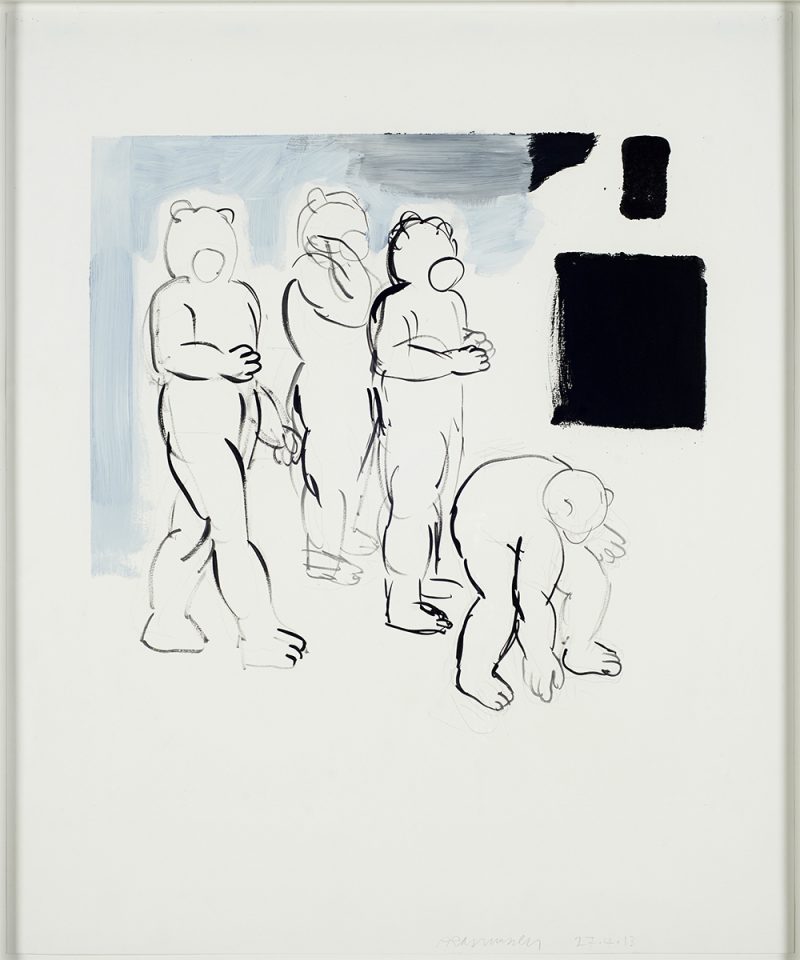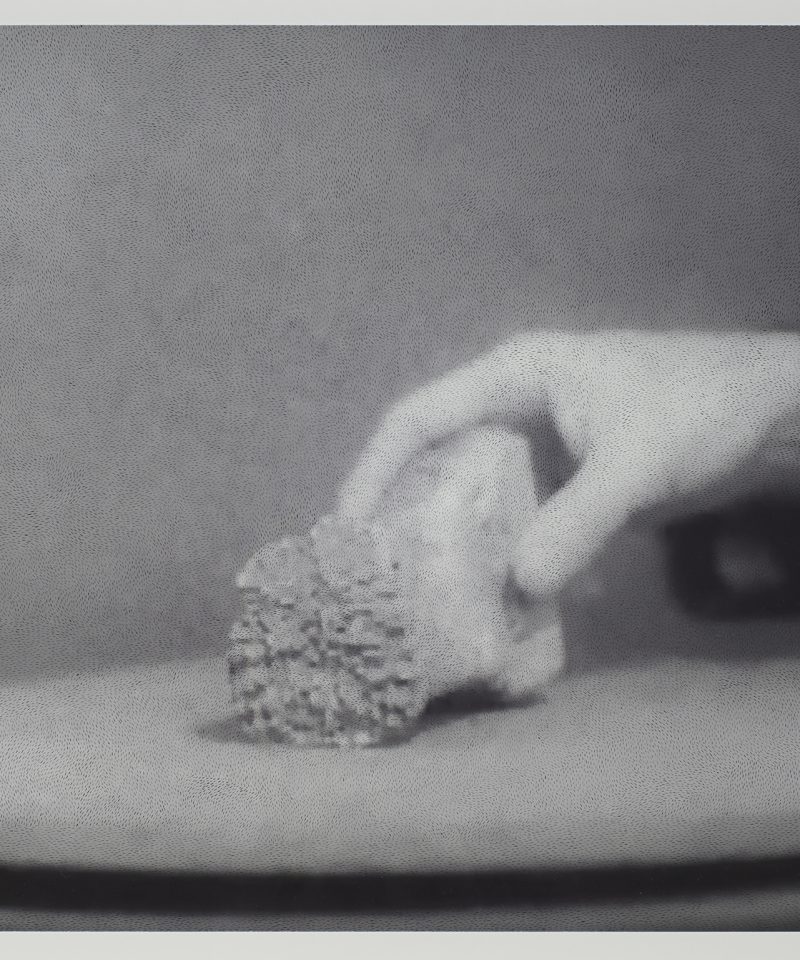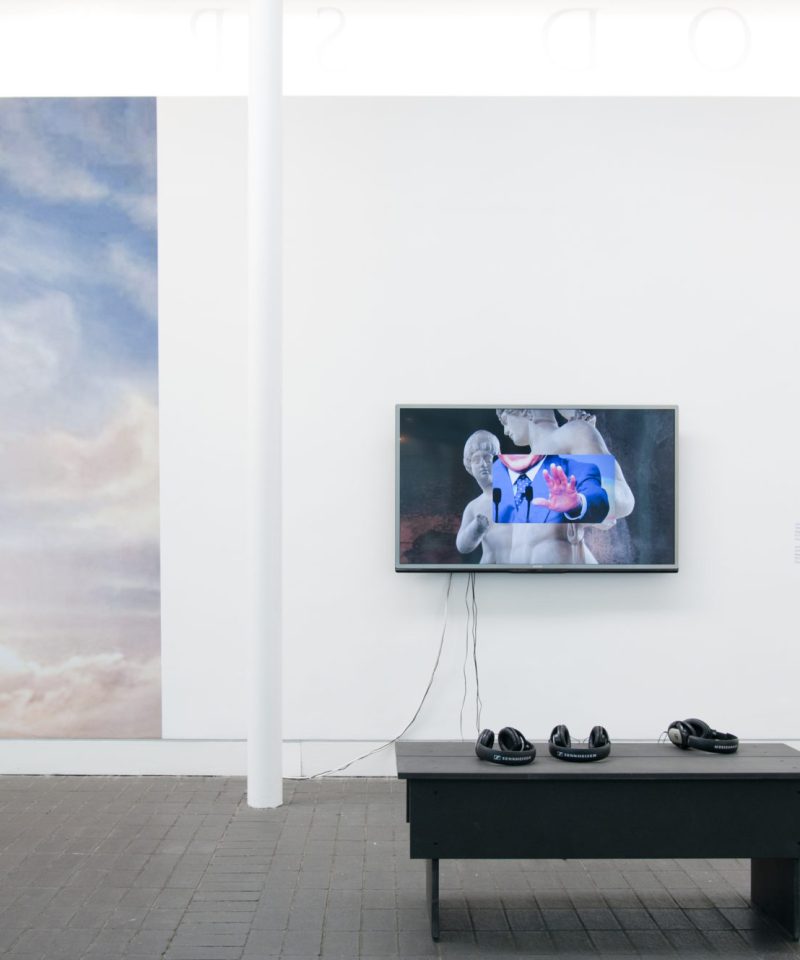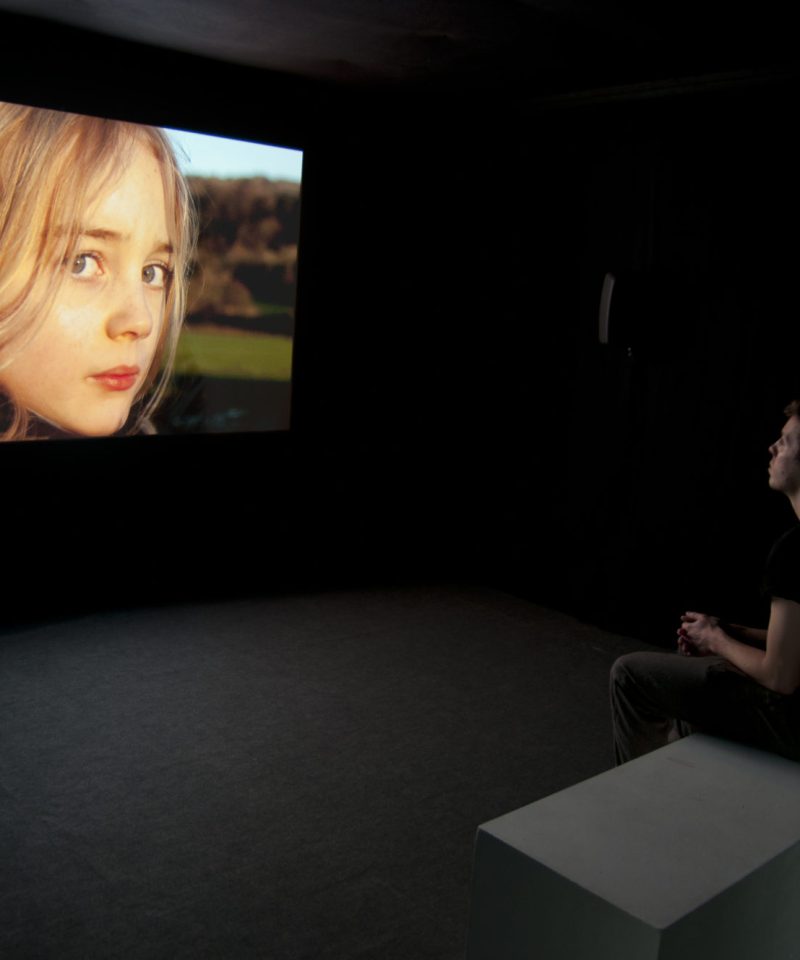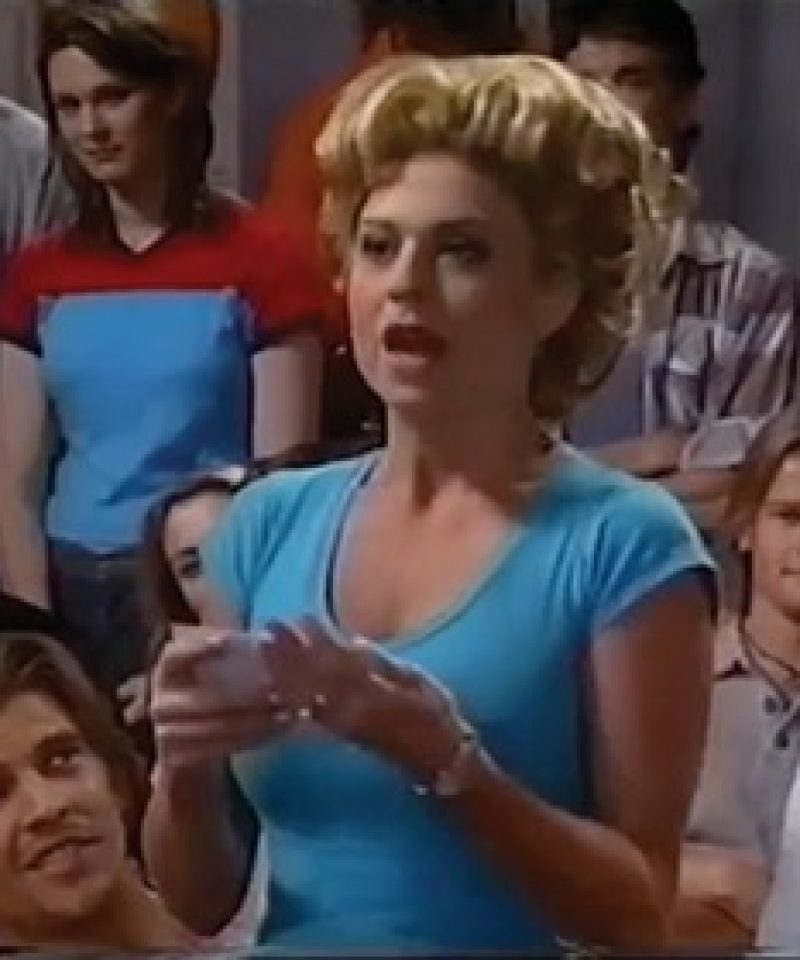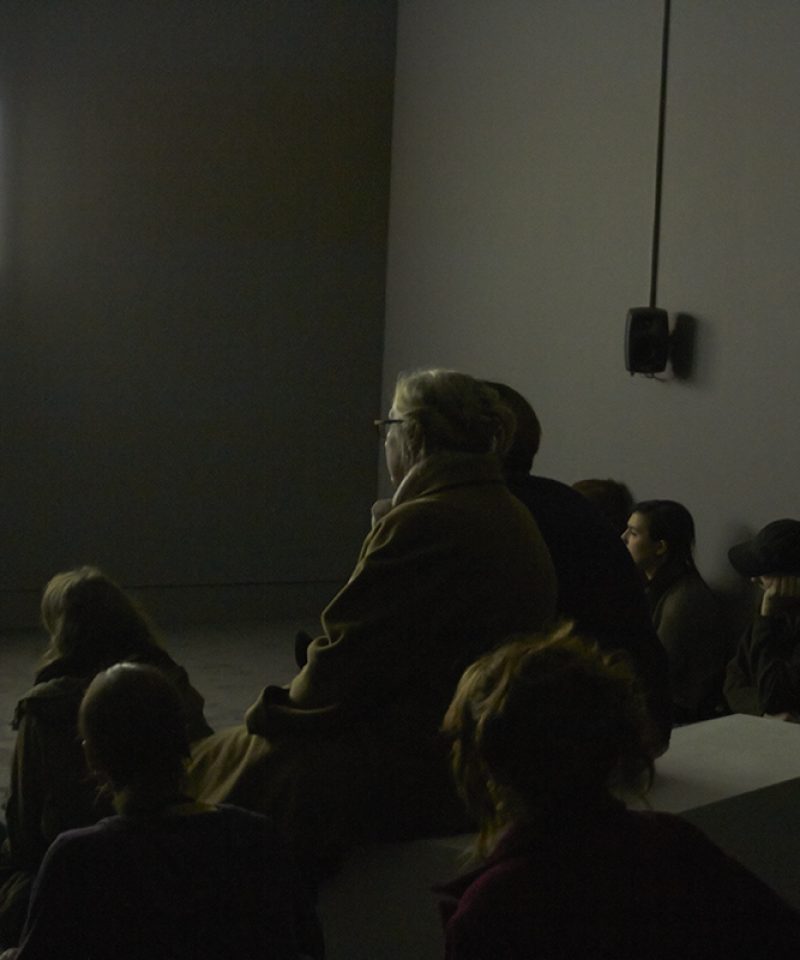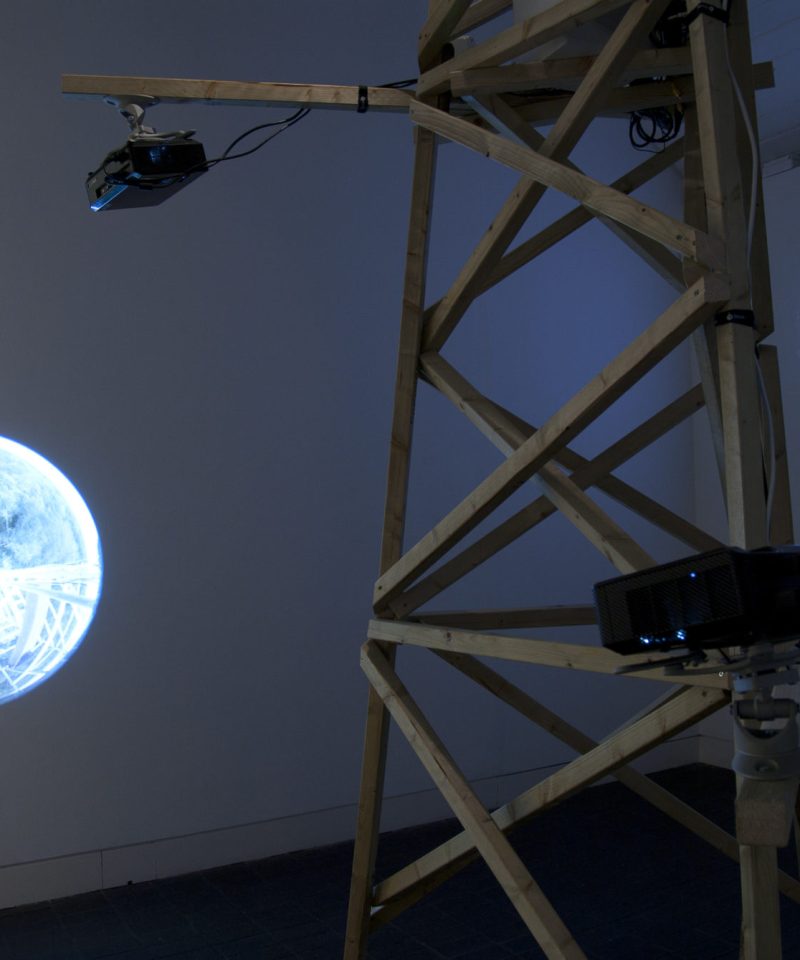Over the past few weeks I’ve exchanged online videos and emails with Lucy Clout, one of the four artists participating in the Jerwood/FVU Awards: “What Will They See of Me?” exhibition, the first stage of a major awards-giving process for moving-image artists in the first five years of their practice, a collaboration between Jerwood Charitable Foundation and Film and Video Umbrella.
*
Shama Khanna: Hi Lucy. I’ve been looking for a starting point for our video conversation. So far I’ve come up with three online videos. They’re all artworks, but that wasn’t necessarily intentional. I was thinking about a theme in your previous work – how the experience of watching can produce (non-cognitive) affects in the body. I’m curious if this is what you’re looking at in your new video for WWTSM? – some sort of fleeting encounter or feeling, drawn out a while longer? Or is it more to do with how actions are produced from those affects – however minor or incidental, like the words the extras are miming? Feel free to pick a video to respond to, or all, or none. Look forward to hearing more about the new piece and starting our discussion.


Lucy Clout: Hi Shama. I’ll leave out the slowness disclaimer.
It is Friday night and I am sat at home waiting for parts of the new work to render. It is my sneaking hope that a title will come out of these conversations, but y’know no pressure…
The Joyce Wieland and Michael Snow is so very much ASMR. Except I guess you had to watch it in a room with other people, just like those same audiences had to watch porn in a porn theatre. The past was disgusting, no?
‘Fleeting and sub cognition’, yes there’s some of that in the new work I think/hope. It’s odd to write about it at this stage, hard to distinguish between what the work is and what it was going to be. I use a voiceover which might be recognisable to some and images of a beach that is not just any beach. These aren’t cameos, the voice and the place aren’t used to bestow status, the mild recognition is to be an experiential entry point for audience. It’s manipulative.
Speaking of which (ha) here is some of what I am looking at for my next work; manipulation under anaesthesia: here and (1.25) and here, those images of the unconscious body being moved in those odd ways for their own good are just fascinating; horrifying though funny at points too.
I can’t even look at those red trousers. I used to play the drums as a teenager, did I tell you that? I wasn’t good at it and I was particularly not good at it when others were watching. okay I am on the edge of just telling anecdotes, which is an annoying default of mine, so I am going to press send so at least I’ve begun.
*
SK: Those videos are horrific! And those people are mad – it’s like watching somebody falling down awkwardly over and over, only at the (over-excited? mauling?) hands of others. The patients must wake up horribly bruised, no? For once I’m on the side of the insurance companies – one of the stated risks of MUA being ‘an increase in pain’ is surely decisive? Are these videos for educational purposes? Or where do you place this video on the ASMR > S&M scale of emerging spectatorship?!
I’m really interested in the difference you pick up on between videos which work better watched in a room with others and the experience of watching solo, behind your own screen. How will people see the finished video in the gallery – will there be headphones or speakers? (I’m quite enjoying the freedom of knowing my audience – talking to you by email rather than posting straight to the blog. Maybe I should include the NSA spooks in my unknown known audience??).
I can imagine how the voiceover and the familiarity of that voice, and the ‘not just any beach’ draw the viewer in, in an instinctive way rather than through rational instruction. For those who recognise these hooks, they become implicated in the work, through the coincidence of their own memory. But I guess something else happens with those who don’t recognise those elements. One reason I included Pearl Vision by Mark Leckey in the last message was because he describes it as a self-portrait, I guess Leckey’s identification with this brand of drum is, for people who know about it, to also share in his affinity with it. For me the risk is of people not recognising those things. I guess then the clues would have a different, unintended effect? Despite not knowing much about drums (and despite his red trousers!) I still appreciated Pearl Vision as a paean to something held dear.
*
KC: I imagine those videos are mainly watched by people desperate to regain mobility, there seem to be links from pain forums or sites about specific conditions. The combination of the authoritative medical (dangerous!) anaesthesia with the always-a-bit-suspicious chiropractor is particularly interesting to me. Would I believe in the healing possibilities of a chiropractor more or less if they had the full operating theatre set up? Over excited mauling- I love that. There’s something about one body handling another, one body the authority on the other. I don’t know how they fit into the world, there’s a fair bit of horror/glee in the comments about the sound of the body cracking, but I suppose it mainly talks to people’s desires to be mobile and understand the physiology of the body externally. I am sure there is something of the drug rapist in the watching of it (and god knows I can’t face doing that google search), but I am interested in the subjectivity/experience where watching one of those videos might lead you to having this procedure, the decision to temporarily hand over your body.
Yeh it’s funny because I feel like almost everything is better watched at home, except 3D, blockbusters and art video. I wonder if this is partly describes my own comfort with the gallery space? What an unexpected thought. Also you know I am just your sham audience right? All this is fakery, like when you fancy someone and try to have hilarious conversations in their vicinity? I am going for quick and jocular whilst trying to hide my feelings of narcissism. And you?
In the Leckey thing (who I think is generally an amazing artist -I say to the imagined audience, and indeed to Mark Leckey who is probably reading this knee to knee with the NSA spooks) that lone drum drives me crazy. It seems like such a status object, all macho and smooth and fulfilling a fantasy only available to this man, a thing advertised to him, the word “paradiddle” hanging over it all. VOM. I want to watch a fat body, an old body, actual genitals or maybe some huge fuck off pubes, anything other than a slightly older yet still financially viable body expressing itself via a literally shiny new object of status, an object which wants this man’s attention. I think the work assumes not that you know the brand of snare but his brand, his earring, etc etc.
But I think maybe my work isn’t clear of that trap either. I want that voice and that beach to activate a type of reading and bring forward these very known background objects (repeated at least twice daily). However I am aware of the risk that their position as disposable culture could be understood as part of the tedious reverse-snobbery use of pop culture that has filled review sections and dating profiles for the past 20 years. I really can’t bear for that to be how the work is understood. I don’t think these soaps are hilariously naff, or that my attention to them is democratic. They are rich and omnipresent and describe both a culture and a set of desires. I do like that grubby keyboard and mac in that Leckey work.
Here is my only link, a crane building a crane:
*
SK: Thanks for that nice intermission! I like time lapse and have recently discovered the mesmerizing qualities of tilt shift (the cars are life size! Trust me).
I’m interested in how ‘minor speech’ and the disfluencies which interest you might have a more, resonant or horizontal affect – rather than an argument which would be more targeted. Previously, we’ve emailed about Silvia Federici and affective labour, which engages both our rational intellect as well as our feelings in an exchange. Typically air stewards and call centre workers epitomize this shift from mechanical to ‘feminised’ service economies. Now the ASMR you draw attention to in your previous work Shrugging Offing (2013) complicates this as the actual exchange between the videomaker and the viewer is less obvious and more performative?
You were the first to tell me about online therapy, which I couldn’t help thinking about when I watched Her recently – have you seen it? It struck me that, increasingly, therapy is available to us as a consumable form, rather than something more lasting – we’re ok until we need the next update! (In a less narcissistic, more urgent way, how you describe how the back pain sufferers might be prompted to impart their agency to those crazed chiropractors, is a selflessness quite apart from conventional therapy.)
I wonder, as the economy becomes progressively touchy feely and peripheral (the internet of things etc.) there’ll be less and less direct, or argumentative communication and it will be harder to distinguish fading memories of a certain Merseyside accents and Australian beaches we’ve never visited but remain in our vernacular. I think, as I understand it, your focus is very timely identifying the axis on which these things are turning on.
Anyway, all this talk before I’ve actually seen the new video, which I’m sure will prompt a host more ideas and questions for you.
Did you decide on a title?
*
KC: I’ve never had Skype therapy but I imagine it to be very practical for some people. The idea of the lone chair with tissues beside it waiting to be activated seem no less problematic to me. I’m both intrigued and horrified by the art on the walls of therapists’ offices, these images which someone else imagines will be cognitively or emotionally useful to the imagined patient…. I’d much rather be in my own surroundings with the familiar distraction of the laptop. I don’t think that therapy really works in this country anyway, since the NHS is financially unable to offer the kind of long-term relationship that seems necessary and yet the idea of paying for medicine is both alien and humiliating. I have had this long term plan to make an expanded documentary about the peculiar situation of the big old beast that is the NHS taking on the American secular Buddhist practice of mindfulness – socialized medicine using this individualized meditative practice because medical trials proved it financially viable. It’s such a curious case study of how the state deals with the bodies of its citizens. Particularly when looking at the interpretations of mindfulness that stress acceptance and place the power/burden of health back onto the consciousness of the individual.
It is hard to imagine that there will be less touch in the future (there will always be children and their grabby hands) also since I’ve been thinking a lot about how touch and minor speech are often interchangeable, I think that the desire for touch expressed on the internet doesn’t necessarily describe an alienated population but just how strongly people’s desire for it is.
The video is called The Extra’s Ever-Moving Lips. I’d been saving Her until after the work was finished, and now it is finished so I’m going to go on Sunday night. What do you think of the actual work now you’ve seen it? Does it resemble what you thought it would be in these conversations?
Bonne voyage
X x x
*
SK: Hello from sunny Vancouver!
I think you’re right to point out that these online alternatives to the physical encounter aren’t necessarily a lesser experience. Lest we forget that the porn industry has driven the rise of the internet and most popular screen media. Indeed, online therapy could be a viable option for the NHS – a cheaper way of offering longer term therapy? But no doubt demand is higher than ever and they’re too far down the line with that stopgap style ‘mindfulness’ therapy train to change course now.
And of course filmmaking is this very proxy we’ve been circling around. Seeing the new video, The Extra’s Ever-Moving Lips, I realize it wasn’t important to have seen, or to remember the details of this never-ending soap. The lack of continuity you mention and the dependable regularity of its scheduling was the sense of it I remembered most (perhaps too even those extras who didn’t quite blend in as expected). Not to say I wasn’t aware of watching it in a room with lots of people my age and collectively remembering this easily forgotten part of (lots of) our lives, just more self conscious of it! It was a strange pleasure to see Marilyn again!
I liked how you had to work out the connection between all the elements of the work as if you were a forensic detective, but without needing to make a judgment about what it might all meant – similarly to how the female lip-reader explains her role in the investigation process. I imagine this must have been your experience in the production phase too – working without a script and responding to the different directions the people in the video, and the practicalities of filming sent you in.
Thinking about the other way we use words – as throw-away sounds like ‘yeah’ and ‘um’ – you realize their function is gestural, almost like ‘pre-speech’, rather than trying to persuade or reproduce desire. In your film I felt aware of this even when something was being explained – the way the lip-reader repeated the phrase ‘dead-end-road’ resounded with me quite musically for example. As algorithmic language increasingly tries to pre-empt our desires it seems necessary (to me at least) to be able to distinguish between the two. The way you bring memory into the equation seems quite un-computer-like in this sense – when forgetfulness is one way of dealing with the mass of information we’re so close to all the time.
Not sure if you want to say anything else? If not, congrats and good luck for the opening in Glasgow next month x
